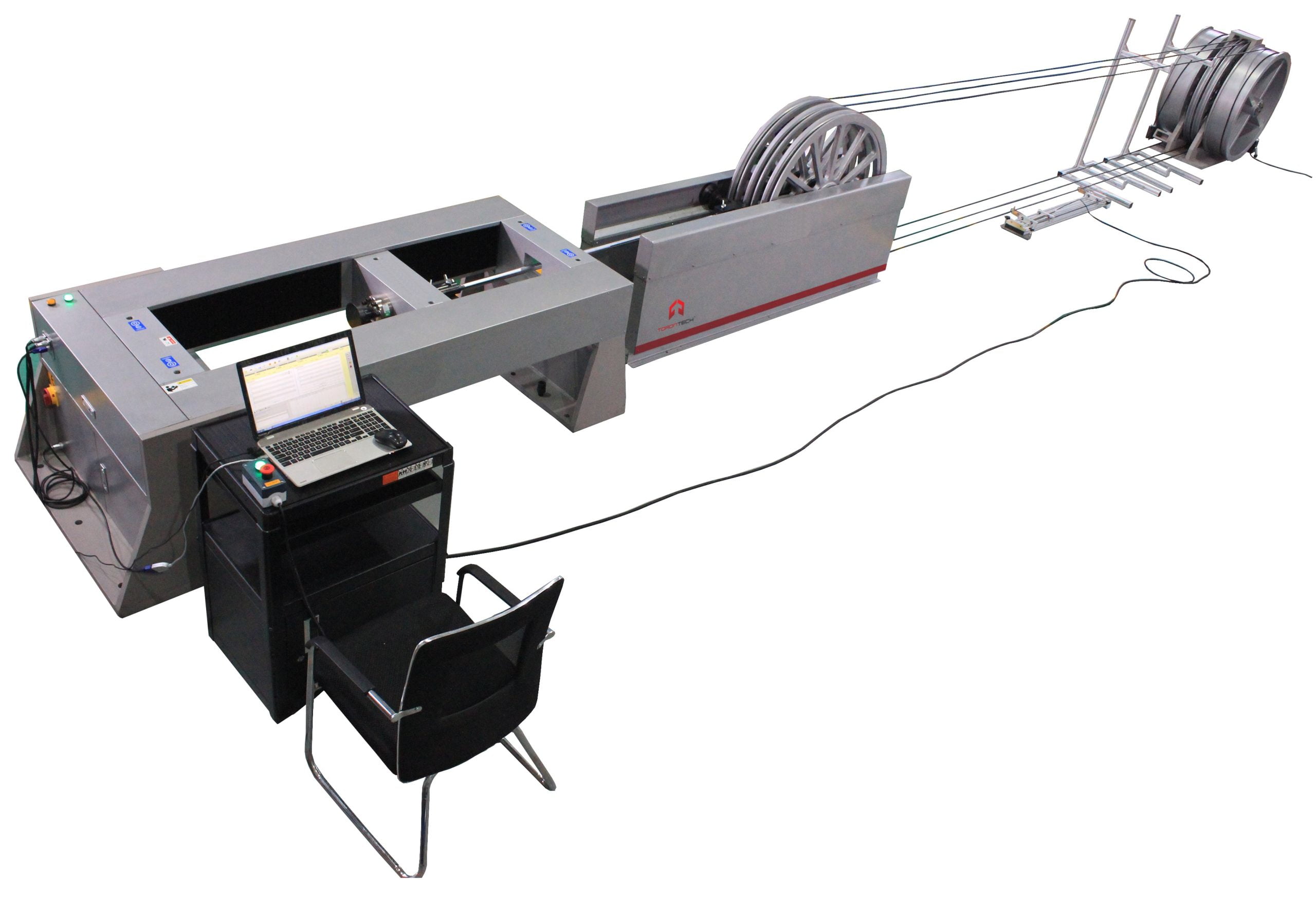Methods fibre testing equipment supports network efficiency
All You Need to Know Concerning Robotic Vision and Its Applications in Advanced Optical Dimension Solutions
Robotic vision stands for a significant improvement in the crossway of computer system vision, fabricated knowledge, and device learning. This innovation boosts the accuracy of optical dimension systems, allowing real-time information analysis and boosted quality assurance. Its impact spans multiple markets, from producing to health care. However, the evolving landscape of robotic vision elevates questions concerning future capabilities and applications (fibre testing equipment). What developments lie in advance in this transformative field?
Comprehending Robotic Vision: Trick Concepts and Technologies
Robotic vision incorporates the innovations and techniques that enable devices to translate and recognize aesthetic info from their setting. This field integrates components of computer vision, expert system, and artificial intelligence to help with computerized decision-making based upon aesthetic information. Key concepts include picture handling, which involves the improvement and evaluation of pictures to extract purposeful features, and item recognition, which permits makers to determine and categorize items within a scene.

The Integration of Robotic Vision With Optical Dimension Equipments
As industries progressively demand accuracy and efficiency, the combination of robot vision with optical dimension systems has emerged as a transformative method. This synergy allows robots to view and interpret their surroundings, enhancing the ability of optical measurement systems to assess and assess things with unrivaled accuracy. By equipping optical sensors with sophisticated imaging modern technologies, robotic vision allows real-time data collection and processing, helping with immediate changes to measurement specifications.
The combination encourages automated systems to discover variations in measurements, surface high quality, and alignment, which are important in top quality control processes. Improved algorithms, such as artificial intelligence, further increase this integration by improving the systems' capability to adjust to different atmospheres and circumstances. Consequently, the assimilation not only improves measurement processes however also lessens mistakes, making sure that items fulfill rigid sector requirements, thus solidifying the duty of robot vision in the future of optical measurement systems.
Applications of Robotic Vision in Manufacturing
In modern-day manufacturing environments, using vision systems has reinvented manufacturing processes by allowing equipments to perform tasks with exceptional precision and rate. Robotic vision systems are increasingly utilized for quality control, where they evaluate items for flaws and assurance adherence to specs. These systems use cams and this page progressed formulas to evaluate products in real-time, considerably decreasing the risk of human error.
In addition, robot vision assists in automation in production line, enabling robots to precisely determine parts and construct them click for info with very little downtime. This technology also boosts supply monitoring, as vision systems can keep an eye on stock degrees and identify discrepancies, guaranteeing a seamless supply chain.
In addition, robotic vision help in the implementation of wise manufacturing facilities, where data from vision systems can be integrated with various other innovations to enhance process. Overall, the applications of robotic vision in producing show its critical role in improving effectiveness, top quality, and productivity across different industries
Robotic Vision in Medical Care: Reinventing Patient Treatment

In rehab, robotic vision help in monitoring patient progress and customizing treatment sessions to private needs. It supports doctor by automating jobs such as information collection and patient monitoring, permitting even more time to concentrate on straight client interaction. Additionally, robot vision boosts telemedicine by making it possible for remote medical diagnosis and digital appointments, linking the void in between individuals and doctor. Generally, the application of robotic vision in healthcare is revolutionizing person care, bring about improved outcomes, performance, and individual contentment.
Future Fads and Developments in Robotic Vision Technology
The quick development of robot vision modern technology assures to further improve its applications across various sectors, consisting of health care. Future patterns suggest a significant shift towards incorporating expert system and artificial intelligence, enabling systems to gain from large datasets and improve accuracy with time. Enhanced sensor modern read technologies and deep knowing formulas are anticipated to refine item recognition abilities, permitting robots to translate complicated settings better.

The combination of increased reality (AR) with robotic vision will likely change how robots assist in surgical procedures and diagnostics. This synergy will facilitate real-time data visualization, enhancing decision-making processes. Additionally, miniaturization of elements will bring about more compact and versatile robot vision systems ideal for a selection of jobs. As these advancements unravel, sectors will witness boosted automation and performance, strengthening robot vision as a keystone of ingenious technological options.
Frequently Asked Inquiries
What Are the Main Components of a Robot Vision System?
The primary parts of a robotic vision system consist of cams for image capture, cpus for data evaluation, algorithms for analysis, and actuators for movement. With each other, these aspects enable robotics to perceive and communicate with their environment properly.
How Does Robotic Vision Improve Precision in Measurements?
Robotic vision improves dimension precision by making use of innovative imaging innovations, allowing precise object detection and spatial evaluation. This ability minimizes human error, raises repeatability, and enables real-time adjustments, inevitably boosting total measurement reliability and performance.
What Industries Advantage A Lot Of From Robotic Vision Technology?
Different sectors benefit substantially from robotic vision modern technology, including production, medical care, agriculture, and logistics. These industries make use of enhanced precision, effectiveness, and automation, leading to enhanced performance and reduced operational expenses in their particular procedures.
Can Robotic Vision Systems Operate In Low-Light Issues?
Robotic vision systems can without a doubt function in low-light conditions, making use of sophisticated sensing units and formulas to boost photo clarity. This capability allows them to perform efficiently in different atmospheres, consisting of commercial and surveillance applications, despite marginal lighting.
What Are the Prices Connected With Applying Robotic Vision?
The prices related to applying robot vision vary significantly, influenced by parts such as cams, software, and assimilation. Additional expenditures consist of upkeep, training workers, and prospective upgrades to existing systems, which can gather gradually.